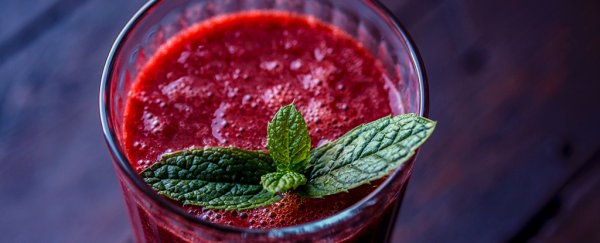Just because Kim Kardashian, January Jones and Mayim Bialik did it, that doesn't mean you should.
In fact, a growing number of experts are now saying: It's a bad idea to eat your placenta.
The gooey, spongy organ (see photo below) that connects a growing foetus to the uterine wall during pregnancy and supplies it with nutrients and oxygen via the umbilical cord is often hailed as a miracle food.
Proponents of eating it, a practice called placentophagy, hail its ability to cure anything from iron deficiency to postpartum depression.
Just one problem. There's no scientific basis for that, according to the research.
In fact, there's no evidence at all that it does anything beneficial, according to a 2015 meta-analysis conducted by researchers at Northwestern Medicine led by Cynthia Coyle.
The team examined 10 current studies of placentophagy, both in humans and animals. Humans are relatively unusual in that placentophagy is a biological imperative in non-human mammals, and studies in rats and mice have found that there are some benefits, such as hormone regulation and pain relief.
This, naturally, has led to the conclusion that there are similar benefits to humans; but, as Coyle's meta-analysis determined, this is simply not the case. The animal studies simply aren't translatable into human benefits.
 Freshly removed placenta image by Neja Hrovat/Shutterstock
Freshly removed placenta image by Neja Hrovat/Shutterstock
And last year, a double-blind placebo-controlled study across 23 participants found that placenta's reputation as an excellent source of iron is vastly overstated.
When compared to a placebo pills with less than 15 percent of the iron content, placenta pills showed no significant difference in iron levels.
There does seem to be something of a placebo effect, with positive influences on mood, iron status, lactation, and general energy reported by supporters of the practice. None of these have ever been proven in clinical studies.
But, as Kim Kardashian put it, "What do I have to lose?"
Not so fast. Put down the plasagne.
"Medically speaking, the placenta is a waste product," said gynaecologist Alex Farr, from the Medical University of Vienna, who has recently co-written a paper alongside a team from Weill Cornell Medical University.
"The presumed nutrients such as iron, selenium and zinc are not present in sufficient concentrations in the placenta. However, high concentrations of heavy metals in the placenta were found to accumulate there during pregnancy."
A 2016 study found that there are detectable levels of arsenic, cadmium, cobalt, copper, iron, lead, manganese, mercury, molybdenum, rubidium, selenium, strontium, uranium, and zinc in placenta pills - not enough to cause harm in single doses, but which could be harmful in larger doses.
The four percent of study participants in a 2016 study who experienced headaches following ingestion of placenta pills could be triggered by toxic ingredients, Farr's team's paper said.
It gets worse. Earlier this year the Center for Disease Control in the US issued a warning, reporting a case wherein an infant repeatedly contracted the life-threatening blood infection Streptococcus agalactiae - from the placenta pills being taken by the mother.
There is no regulations on how placenta is stored and prepared, or how much constitutes a single dose. Some companies will freeze-dry it for the new mother and powder it into pills, but placenta smoothies, and DIY recipes online, are not uncommon.
It's important, Farr said, that mothers are fully informed about all the potential risks.
And besides, "The placenta is genetically part of the newborn," he added. "Eating the placenta borders on cannibalism."
The paper has been published in the American Journal of Obstetrics and Gynecology.
